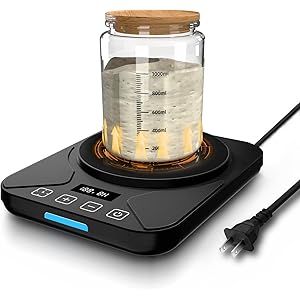Understanding the Flocculation Test
The flocculation test is a crucial analytical method used in various fields, including microbiology, water treatment, and food science. This test assesses the ability of particles to aggregate and form flocs, which can then be easily removed from a liquid medium. By understanding the mechanisms behind flocculation, researchers and professionals can optimize processes in wastewater treatment, brewing, and other industries where particle removal is essential.
Principles of Flocculation
Flocculation is primarily driven by the interactions between particles in a suspension. These interactions can be influenced by several factors, including the size and charge of the particles, the presence of flocculating agents, and environmental conditions such as pH and temperature. The flocculation test typically involves adding a flocculant to a sample and observing the rate and extent of floc formation, which can provide insights into the efficiency of the flocculation process.
Types of Flocculation Tests
There are several types of flocculation tests, each designed to evaluate different aspects of floc formation. Common methods include jar tests, where multiple samples are treated with varying concentrations of flocculants to determine the optimal dosage, and visual assessments that gauge the clarity of the supernatant liquid after flocculation. Additionally, more sophisticated techniques, such as laser diffraction and dynamic light scattering, can be employed to analyze particle size distribution before and after flocculation.
Importance of Flocculants
Flocculants are substances that promote the aggregation of particles in a suspension. They can be natural, such as starches and gums, or synthetic, like polyacrylamides. The choice of flocculant is critical, as it directly affects the efficiency of the flocculation process. The flocculation test helps identify the most effective flocculant for a specific application, ensuring optimal particle removal and improving overall process efficiency.
Factors Affecting Flocculation
Several factors can influence the outcome of a flocculation test. These include the concentration of the flocculant, the nature of the particles, the ionic strength of the solution, and the temperature. Understanding these variables is essential for accurately interpreting test results and making informed decisions about process adjustments. For instance, increasing the flocculant concentration may enhance floc formation, but excessive amounts can lead to the opposite effect, resulting in poor separation.
Get more content like this!
Sign up to receive updates and new terms first hand.
Applications of Flocculation Tests
Flocculation tests are widely used across various industries. In water treatment, they help determine the best methods for removing contaminants from drinking water. In the food industry, flocculation tests can optimize processes like juice clarification and beer brewing. Additionally, in pharmaceuticals, these tests are crucial for ensuring the purity and quality of products by effectively removing unwanted particles.
Interpreting Flocculation Test Results
Interpreting the results of a flocculation test requires a comprehensive understanding of the parameters involved. The clarity of the supernatant, the size and density of the formed flocs, and the time taken for floc formation are all critical indicators of the test’s success. By analyzing these factors, professionals can make data-driven decisions to enhance their processes and improve product quality.
Challenges in Flocculation Testing
Despite its importance, flocculation testing can present challenges. Variability in sample composition, the presence of interfering substances, and the subjective nature of visual assessments can complicate results. To mitigate these issues, standardized testing protocols and advanced analytical techniques should be employed, ensuring consistent and reliable outcomes across different testing scenarios.
Future Trends in Flocculation Testing
As technology advances, the future of flocculation testing looks promising. Innovations in automation, real-time monitoring, and data analysis are set to enhance the accuracy and efficiency of these tests. Additionally, the development of new flocculants and eco-friendly alternatives will likely shape the landscape of flocculation processes, making them more sustainable and effective in various applications.




